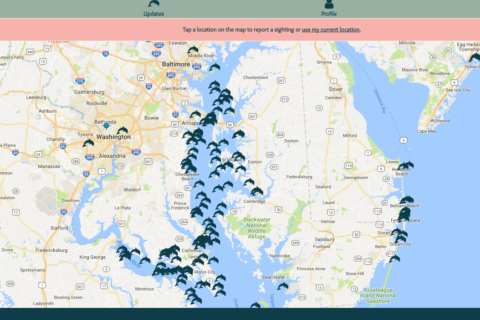WASHINGTON – The scientists who set up a website for sightings of bottlenose dolphins in the Chesapeake Bay say they were amazed by the number of sightings reported this year.
Since the Chesapeake DolphinWatch website launched in June, more than 900 sightings by members of the public have been logged.
Dr. Helen Bailey, a scientist at the University of Maryland Center for Environmental Science’s Chesapeake Biological Laboratory, founded the DolphinWatch research project in hopes of learning more about where dolphins go in the bay and when.
In addition to collecting reports of sightings, she and her team have partnered with the nonprofit group SouthWings to do aircraft flyovers in search of dolphins.
The team also places underwater microphones, called hydrophones, in key locations in the Bay to listen for dolphin calls.
“What we’ve been finding is that, actually, dolphins go in many places around the Bay. We haven’t found just one hot spot — they actually go as far north as the Bay Bridge and beyond. They go on the east and west sides of the Bay. They will go right up the rivers. We had a sighting one 30 miles up the York River,” said Bailey.
The number of sightings reported to the website peaked between June and August, and during the fall, researchers noticed dolphin sightings were more frequent in southern areas of the bay.
Bailey said she hopes to make the project an annual effort, in order to compare results from one year to the next. She would also eventually like to determine whether dolphin movements are an indicator of the health of the Bay.
The DolphinWatch YouTube playlist has a ton of videos, including one that shows the locations of confirmed dolphin sightings week by week between late June and early October.
Here’s one of them:








